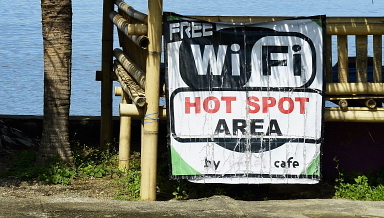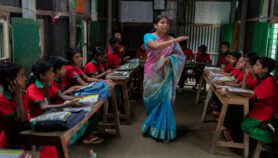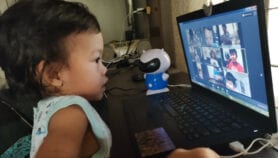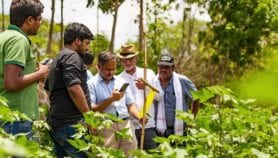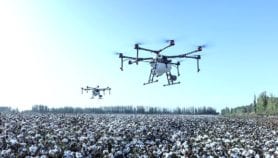By: Crispin Maslog
Send to a friend
The details you provide on this page will not be used to send unsolicited email, and will not be sold to a 3rd party. See privacy policy.
Considering the vastness of the Pacific Ocean, one would think that the 22 Pacific island countries would have long ago embraced the digital revolution if only to connect with each other.
The surprise is this happened only about five years ago, according to David Robie, veteran journalist and director of the Pacific Media Centre in Auckland University of Technology, New Zealand.
“The Pacific islands region used to have a reputation for being the last frontier for mobile telecommunications and digital media,” Robie tells SciDev.Net, citing his paper presented at the Asia Media Information and Communication Centre (AMIC) conference in Dubai, United Arab Emirates, last June.
“But a digital revolution is (now) sweeping the Pacific with major implications for the region’s news media, communication education and potentially even more so for democratic governance and development,” adds Robie who received the AMIC Asia Communication Award 2015 at the conference.
Smartphones leapfrog conventional media
The 22 Pacific countries are small island states with small populations, except for Papua New Guinea (PNG) that has a population of over 7 million people.
They are separated by thousands of miles of ocean and have to rely mostly on air travel and sea transportation to visit each other or its big neighbours, Australia and New Zealand.
“A dramatic impact of this digital revolution has mainly been on accountability and transparency in the region.”
By Crispin Maslog, professor at the University of the Philippines Los Baños
Of all regions globally, the Pacific has the highest level of international mobility among its people, especially those from Polynesia and Micronesia. The Pacific regional economy is largely dependent on remittances, more so than any global region.
After being isolated for decades, the Pacific is catching up with the modern age. About more than two-thirds of Pacific islanders today have access to a mobile phone. In PNG, the smartphone has completely bypassed conventional mainstream media, Robie says.
Many people in the remote PNG highlands who rarely listen to radio, let alone see an actual newspaper, get their news today via the internet on smartphones.
In the mid-1980s when I was a communication consultant in PNG, I recall that the rugged mountainous country had by that time bypassed land transportation.
Air transport had become the means of moving people and goods from one part of the country to the other.
Now, Robie notes, at least one newspaper in Fiji has “embraced the digital revolution with such panache that it rivals any of the most advanced digital media in its far richer neighbours of Australia and New Zealand”.
He further puts the Pacific digital revolution in perspective.
Internet usage in Australia has a population penetration of 94.1 per cent while New Zealand has a slightly higher rate at 94.6 per cent. This means virtual saturation. Compare this with the dramatic changes in the rest of the Pacific. [1]
In 2011, only 2 per cent of the PNG population of 6.5 million then had mobile phones. This more than tripled to 6.5 per cent penetration last year. A study by the Australian Broadcasting Corporation International Development and InterMedia in 2012 showed that more PNG households had access to a mobile phone than to a radio. [2]
In Niue, a tiny Pacific nation of less than 1,200 people, internet penetration is 92 per cent. The other top internet rates are in Guam (69.7 per cent), New Caledonia (66 per cent), Tokelau which has only 1,300 people (59.8 per cent), French Polynesia (57.5 per cent) and the Cook Islands (48.4 per cent).
Factors for the digital revolution
Robie attributes this digital revolution to Digicel, the Irish-owned company which introduced cheap phones and cut-rate services nine years ago. It is now the fastest growing mobile operator in the Pacific.
In the PNG, when Digicel entered the market in 2007, there were only 100,000 mobile phone subscribers. In the following year, the number went up to 874,000. In the last five years, subscribers increased by 2,400 per cent.
Until August 2009, Nauru (population 10,000) had no commercial mobile service. But after Digicel entered the market, half the population had bought a phone within a week and were on the network.
Another major factor for this digital revolution, Robie says, has been telecommunications deregulation and reform across the Pacific, beginning in Tonga 12 years ago.
A dramatic impact of this digital revolution has mainly been on accountability and transparency in the region.
To quote the Lowy Institute for International Policy, there are “a number of prominent examples of the way in which social media has been used to shed light on negligence, poor service delivery and corruption by governments”. [3]
Facebook groups, independent media blogs and journalism schools have been at the forefront of this greater transparency.
The downside is that some governments have pushed back on this revolution, especially if they have something to hide. The small island nation of Nauru banned Facebook a month ago but immediately drew worldwide protests.
The upside is that as we move into the e-century, this digital revolution has brought about a “Pacific ‘digital generation’ of activists, thinkers, informers and influencers” who will push their societies forward. [3]
Crispin Maslog is a former journalist and science journalism professor at the University of the Philippines Los Baños and director of the Silliman School of Journalism, Philippines. He is a consultant of the Asian Institute of Journalism and Communication and board chairperson of the Asian Media Information and Communication Centre, both based in Manila.
This article has been produced by SciDev.Net's South-East Asia & Pacific desk.
References
[1] David Robie Communication and media education in an e-century: A Pacific perspective (Paper presented at AMIC Conference, Dubai, UAE, June 2015) [2] ABC International Development and InterMedia Citizen Access to Information in Papua New Guinea (ABC ID and InterMedia, 2012)
[3] Danielle Cave Digital Islands: How the Pacific’s ICT revolution is transforming the region (Lowy Institute for International Policy, 2012)


